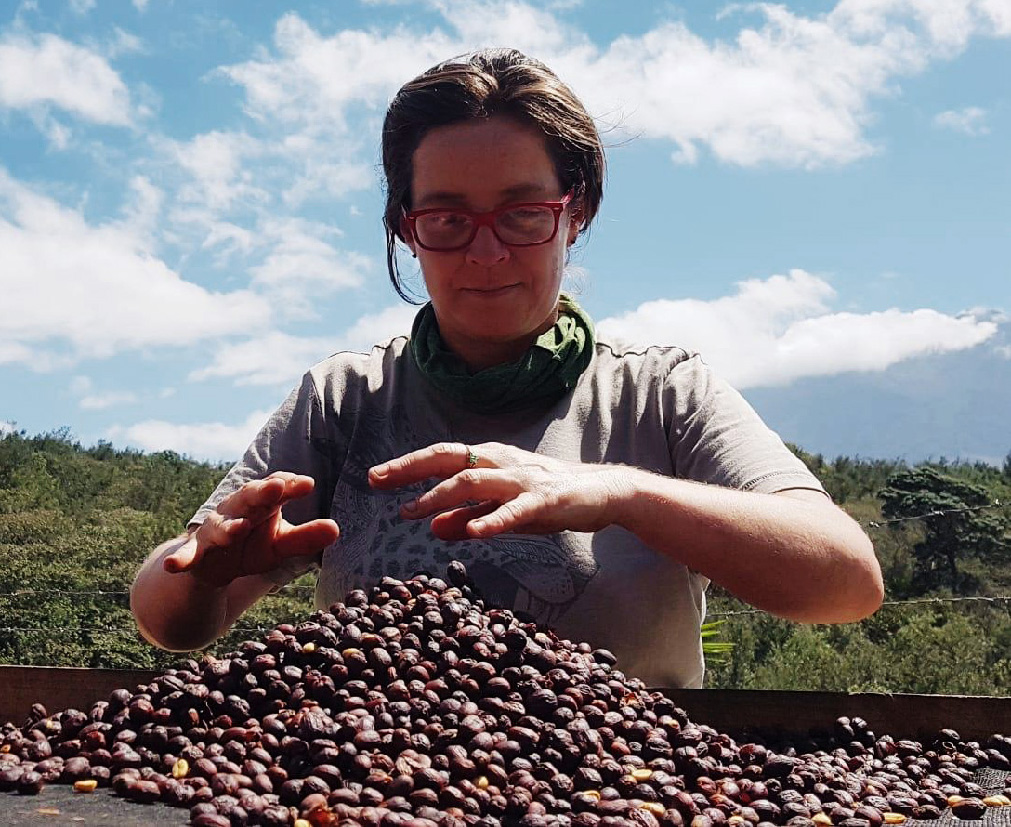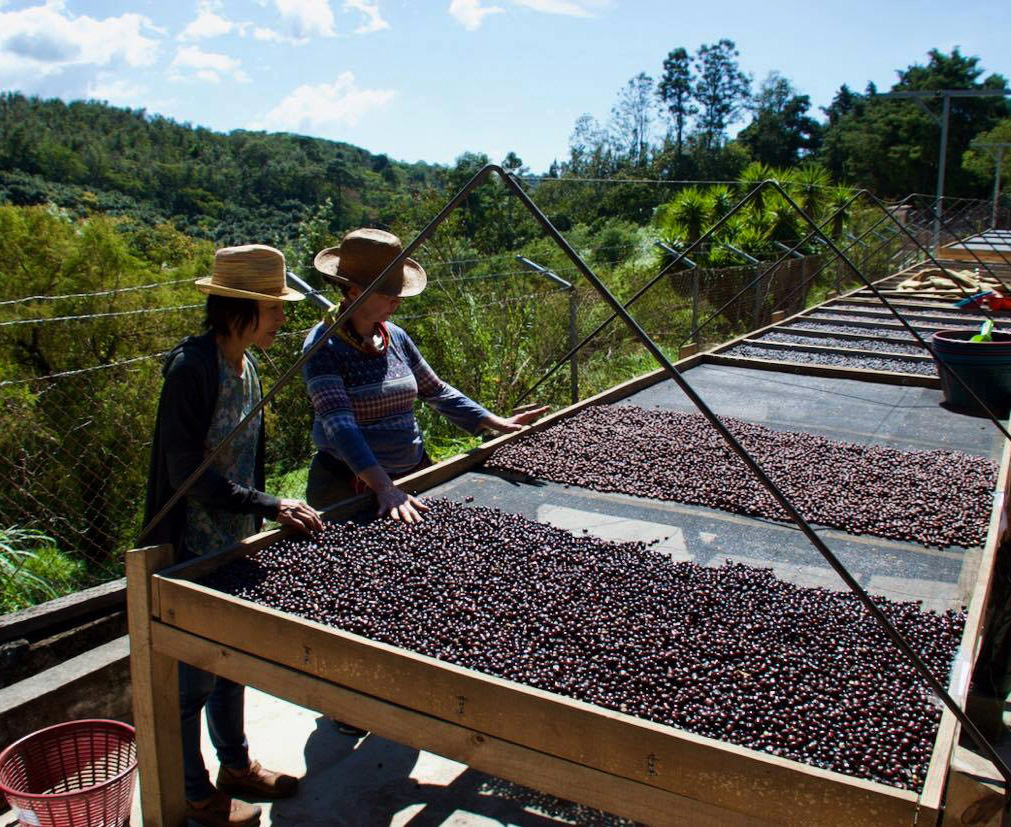Anabella was the 2017 Guatemalan Cup of Excellence winner. Her farm Santa Felisa is located in the town of Acatenango, west of Guatemala City. Anabella is an agronomist as well as an award-winning producer; we interviewed her about agronomy in our Terroir course.
Barista Hustle – With your natural-processed lots, do you wash the cherry before you commence the drying process? (Can you summarise for us the steps, if any, between harvesting and drying?)
Anabella Meneses – First, I wash the cherries and take out the floaters. Then, I proceed to dry the cherries to get rid of the excess of water. After this point, I play with different drying rates and fermentation of the cherries. The way I ferment and dry the cherries depends on the result I want on the cup profile.
BH – Can you tell us about the difference between raised beds compared with concrete or tile patios? Which do you use/prefer?
AM – For naturals, I personally prefer raised beds to concrete patios, since concrete drying is faster because the energy transfer is higher, and it is easier to damage the cherry [due to] the ‘gradient of the temperature increase’ inside the cherry, as well as mechanical impacts. Raised beds ‘aerates’ the cherries more, the drying process is gentler, and raised beds are ergonomically better for the people involved in turning the mass of cherries.
BH – Have you found a particular drying time to be optimum for naturals, or is it different with every new harvest?
AM – It depends on the weather and also the effect you want to express in the beverage. It can be from 15 days to 30 days.… It is a complex and a very interesting subject to study.
BH – What’s the normal humidity level at your farm?
AM – During the harvest from November to April, it is 40–70%. From May to October, it is 50–80% during the farmwork season.
BH – We know some producers who combine drying beds and Guardiolas (especially if their farms or mills are located in areas of high humidity.) What’s your opinion of naturals that have been machine dried rather than dried on patios or raised beds?
AM – Some secondary metabolites will be transformed or even destroyed with the high temperatures. Also, temperatures over 40° C [104° F] will stop the wild yeast reproduction. I prefer to control this variable on the raised beds.
In my personal experience, I have better quality when I process less coffee. So, I prefer a ‘slower process and more quality’ to a ‘quicker process and more quantity’.
BH – Is it the case that the longer you take to dry your coffee, the more boozy and funky it tastes, or is it not that simple?
AM – It is not that simple at all. You can spoil your coffee mass, also. It is a matter of controlling the temperature and the humidity from the environment and inside the beans. (It is very important to avoid mycotoxins or fungus that will consume the sugars available inside of the beans, for example.)
BH – We know some farmers who have constructed UV filters over their raised beds. Do you think UV light exposure makes any difference to the final flavor of naturals and pulped naturals? What are the pros and cons of UV exposure for naturals?
AM – I personally protect the beans from the direct sun rays. It is very important to protect the cherries to avoid temperatures that will limit the ecological succession of the microorganisms responsible for the production of the secondary metabolites that we want. The UV filters will protect all the nutrients and the microbiota activity happening inside the fruit.
BH – Have you done any experiments with mixing in starter cultures (yeasts or bacteria) prior to drying coffee in the natural and pulped natural (honey) processes?
AM – I do it in my naturals and full-wash coffees, with interesting results, but personally, I get better results when the ‘inoculum’ is made from the existing microorganisms … from the biota of the farm.
BH – After drying your naturals, do you hull them straightaway, or do you leave the coffee to rest for a while?
AM – We process the coffee in [relation to] the estimated time of delivery. The coffee beans stored with all the husks will have more protection; extra layers covering the bean are better. But it is important to warehouse the beans in proper bags to avoid changes in the flavors — or, worst — for the beans to turn oldish and white, which reduces their shelf life.

